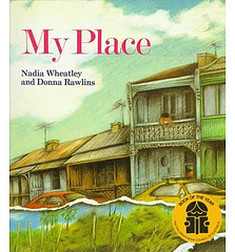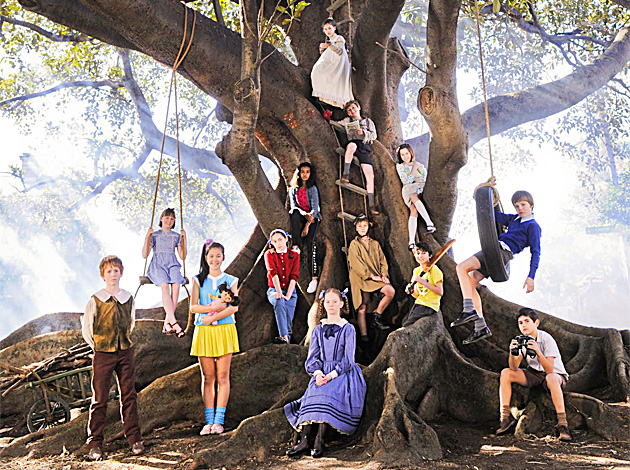My Place is a picture book written by the author Nadia Wheatley and illustrated by Donna Rawlins. It was published in 1988. The story begins in 1998 with a young Aboriginal girl who says ‘My name’s Laura and this is my place’. She introduces her family and friends and talks about her life. The illustrations include a map she has drawn of her neighbourhood and there are comments about the various places and the people that live there.
The next little story in the book is set in 1978 and now Laura’s house is Mike’s house. He too has drawn a map and in the map you can see the differences from Laura’s map.
The book tells the stories of 21 children one child for each decade since 1788 and gives us a look at history through their eyes. Many of the children are linked in some way such as family.
The theme of the book is change. It looks at how things change over the years but at the same time things stay the same such as family values. The constant in the book is the fig tree in the town that all the kids play under. In each different year shown we see how the town is transformed from bushland into an inner city suburb and how in every stage the place is someone’s home which is loved by a child.
From the ABC Teacher resource website:
‘The essential elements in all the stories are the fig tree, the map and the creek. Each is symbolic of the land and its sustenance of the people who live there. It links the 'place' to the original owners of the land and highlights how many people and many cultures now share it. Through the stories, we imagine what life was like for all the characters.’
The book has also been turned into a TV series on the ABC, so far according to the website there are 26 episodes which look at the years 2008-1788 then there are two labelled before time. You can check out the website for the Tv show here.
You can use this resource to look at family and lifestyle, community, changing technology and history. It can be used in any primary classroom from VELS level 2. It could even be used in a secondary classroom. Using it as a resource in a primary classroom the students would be able to relate to the characters because they are a similar age to them and it makes history not as removed to them.



 RSS Feed
RSS Feed
